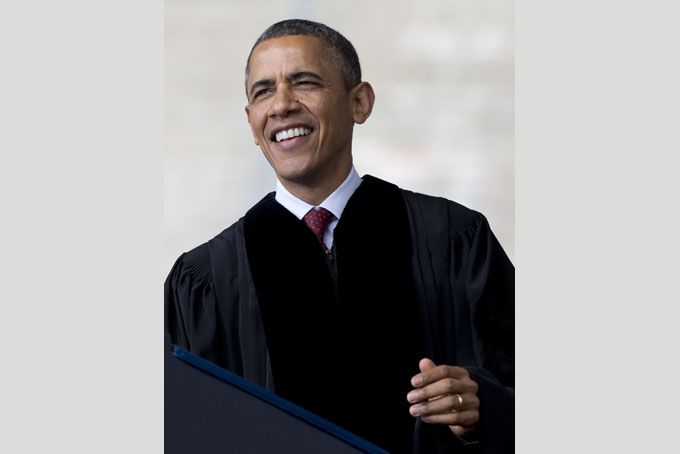
President Barack Obama (AP Photo/Carolyn Kaster)
by Christina Cassidy and Justin Pope
ATLANTA (AP) — When President Barack Obama addressed graduates at Morehouse College on Sunday, he also spoke to the broader community of historically Black colleges and universities — a proud corner of higher education that has struggled more than most during the last few years of economic distress.
The so-called HBCUs educate a hugely disproportionate share of low-income students, and both students and schools have been hit hard by a double punch. First, unemployment for blacks remains nearly double that of whites, making it harder for many students to keep up with tuition. Secondly, tougher credit standards have made it harder to secure a federal PLUS loan used by about one-third of HBCU students.
Graduation rates at HBCUs, which were already facing scrutiny under a national push to improve outcomes in higher education, have fallen over the last five years, according to U.S. Education Department data analyzed by The Associated Press.
The AP found graduation rates declined at 57 of the 80 four-year HBCUs that have complete data between 2006 and 2011. While total HBCU enrollment increased about 3 percent overall, the aggregate graduation rate for HBCU students fell from 37.7 percent in 2006 to 33.7 percent in 2011, the AP found.
That means of the 47,139 students who entered HBCUs six years before, just 15,885 had completed their degree by 2011, though the figures do not include transfers or part-time students.
“Particularly after this recession, I’m looking at an African-American unemployment rate of 16 percent, that’s touching my students,” said Walter Kimbrough, president of Dillard University in New Orleans, who has been critical in the past of some HBCUs. He believes recent criticism of their low graduation rates is unfair.
“They all know somebody who’s lost their job, and if it’s somebody who’s helping them pay for their schooling, we may not see them next semester,” he said.
Morehouse’s 2011 graduation rate, however, was 55 percent, among the very highest of HBCUs.
The HBCU rates compare to a national average of about 58 percent, and 39 percent for Blacks at all four-year institutions. However, while the most selective colleges have much higher graduation rates, their enrollments are also heavily tilted toward high-income students. One recent study found two-thirds of students at the 193 most selective colleges came from the top 25 percent of income, and just 15 percent from the bottom half.
At HBCUs, by contrast, about two-thirds of students receive Pell Grants, which are almost always awarded to families earning less than $40,000. Such students are not only more likely to need to start college with remedial work — which makes for a longer path to graduation — but they are much more vulnerable to financial problems that could drive them from school.
Only 83 institutions nationwide have as many at 60 percent of their students receiving Pell Grants, Kimbrough said. Fifty of them are HBCUs.
“It’s simple economics,” Kimbrough said. “If you get rid of poor kids, your graduation rates can go up.”
The struggles of students have translated into trouble for HBCUs themselves. About 40 percent have seen enrollment declines, and 20 schools saw enrollment fall more than 10 percent between 2006 and 2011, according to AP’s analysis.